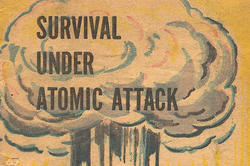RISD’s Center for Complexity launches Horizon 2045, a 25-year project aimed at eliminating the threat of nuclear war.
Envisioning a More Secure Future
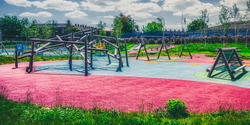
When Industrial Design faculty members Tom Weis MID 08 and Charlie Cannon teamed up to teach Design & Security this fall, they initially expected students to focus on reducing worldwide nuclear threats, which is the driving force behind the Horizon 2045 initiative that inspired the class. As part of a consortium of designers, scientists and policymakers contributing to the initiative, Weis and Cannon are working to redefine nuclear deterrents and imagine a security architecture free of nuclear weapons.
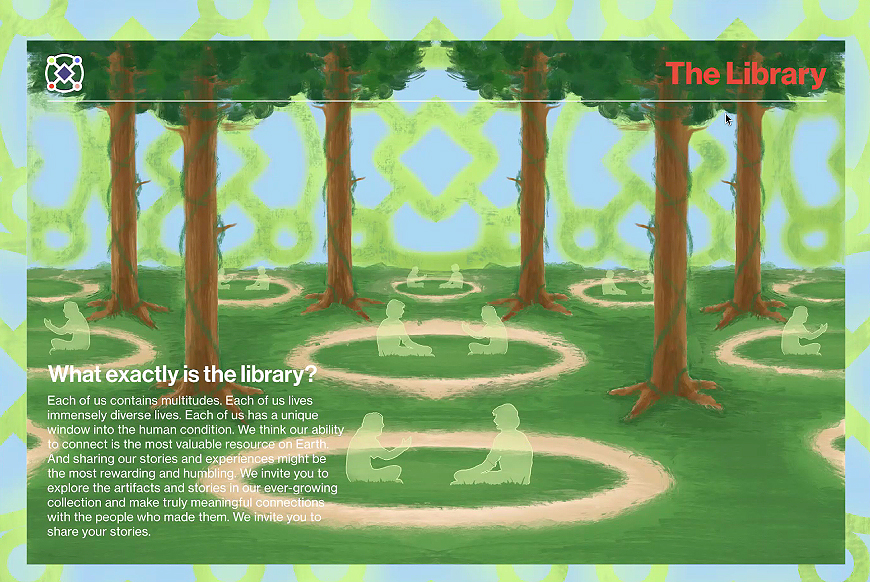
But students in the multidisciplinary, Academic Enrichment Grant-funded studio surprised them by zeroing in on other, related security issues including ecological change, social and political fragmentation, human migration and Artificial Intelligence (AI). “They’re looking at ways to proactively prepare for other kinds of threats, in many cases via surveillance—getting people comfortable with sharing personal data and having it controlled in ways we’re not familiar with right now,” says Cannon.
“Students are looking at ways to proactively prepare for other kinds of threats, in many cases via surveillance.”
Sebastian Boal 22 ID, Lulu Hou MLA 22, Chelsea Dai 22 ID and Zhaouri Wang 22 ID, for example, imagined a future world in which a robot helped the newly transplanted main character in their video project to connect with her neighbors. “That robot knows a lot about everyone in the neighborhood, which is kind of scary to me,” noted guest critic Sara Kutchesfahani of N Square—a network of innovators committed to ending the nuclear threat—during a midterm crit. And the protagonist in a narrative presented by Regina Mao 22 ID, Leann Lazurchuk 22 ID and Avantika Velho 22 ID monitored her nutrition via an implant in her arm, which critics again saw as “Big Brother-y.”
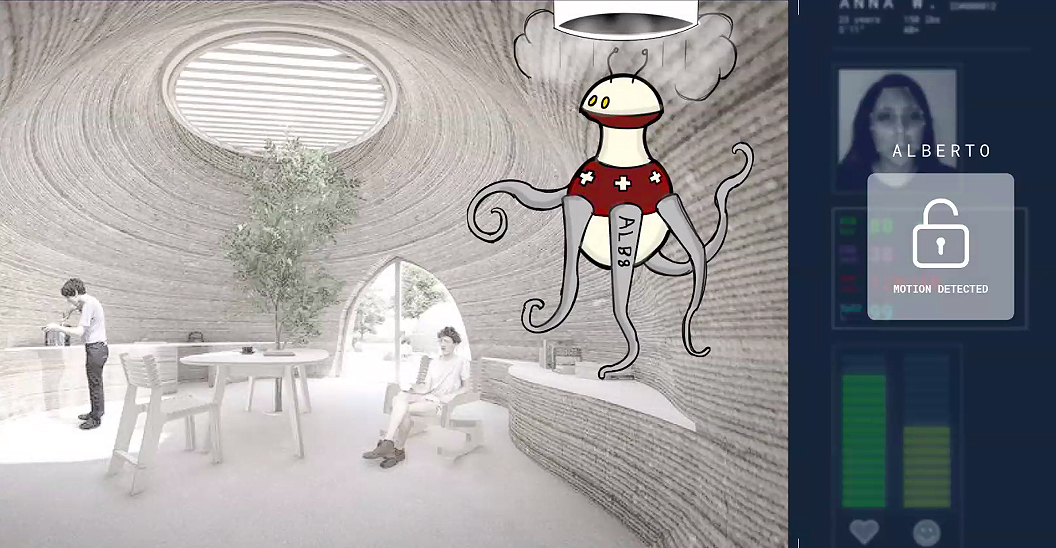

Why are members of Generation Z seemingly more comfortable with government surveillance than their elders? Might it be because they grew up with social media and targeted online marketing?
“It’s not that they’re naive about what’s happening on social media,” says Cannon. “They’re reacting to extraordinary global resource depletion, which few seem to be taking seriously. And the future is only going to be harder, so they’re willing to envision managing that future in ways that people of my generation might see as less than ideal.”
And as Lazarchuk noted during crit, “surveillance sounds dystopic to people, but it’s already here. The only thing we can do is direct it toward more positive avenues.”
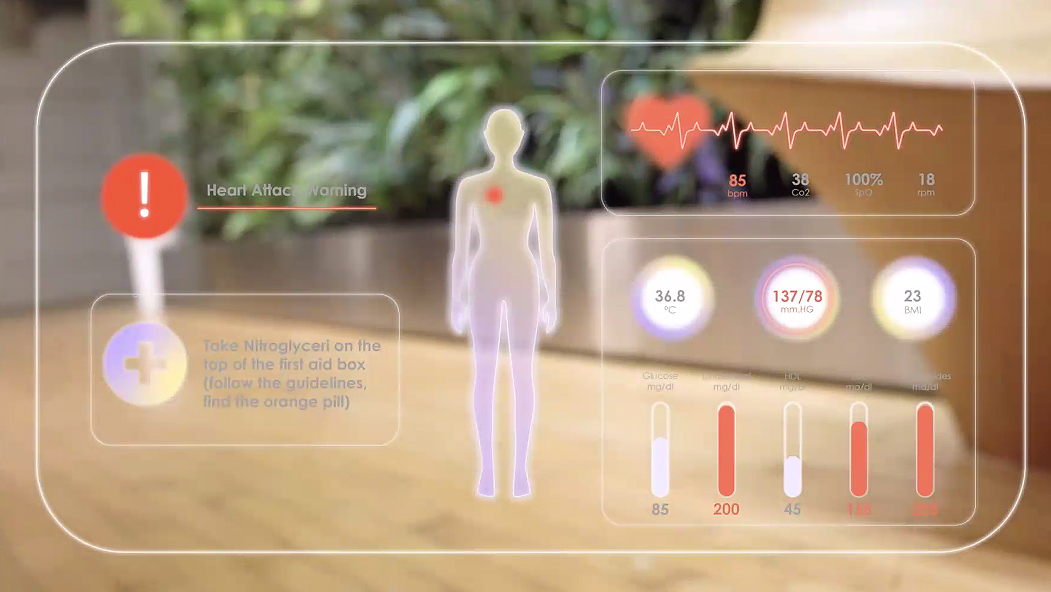
Weis points out that many of the students in the class come from outside the US—from China and India and Eastern Europe. “Some of them are more comfortable with the idea of surveillance and don’t see it as this deep state thing,” he explains. “And some have lived through extreme circumstances such as governmental and political failures, which gives them unique and really useful perspectives.”
“And some have lived through extreme circumstances such as governmental and political failures, which gives them unique and really useful perspectives.”
Weis and Cannon designed the class using a “three-horizons framework,” in which Horizon 1 focuses on the present, Horizon 3 represents a preferred future state some 25 years down the road and Horizon 2 allows students to imagine the steps needed to get from 1 to 3. “That framework has been really helpful,” says Weis. “It’s not about figuring everything out, but building partnerships that will help us move forward. It’s about learning to look at a large system and identify the entry points and audiences you are trying to engage.”
“Oftentimes when you talk about security, the conversation goes to AI gone wrong and all these terrible, dystopic things,” Weis adds. “But students understand that there will always be challenges and it’s not productive to start with the idea of a dystopic future.”
“It’s about learning to look at a large system and identify the entry points and audiences you are trying to engage.”
As the semester comes to an end, students are focusing on Horizon 2. Varun Mehta 22 ID/GD imagines a purely digital “Nation of No Nation” that would help users better navigate the internet and avoid rabbit holes and online conspiracy theories. Visiting critic Jenny Johnston (also of N Square) applauds the idea, noting that we’re currently “swimming in a crazy ocean of information.”
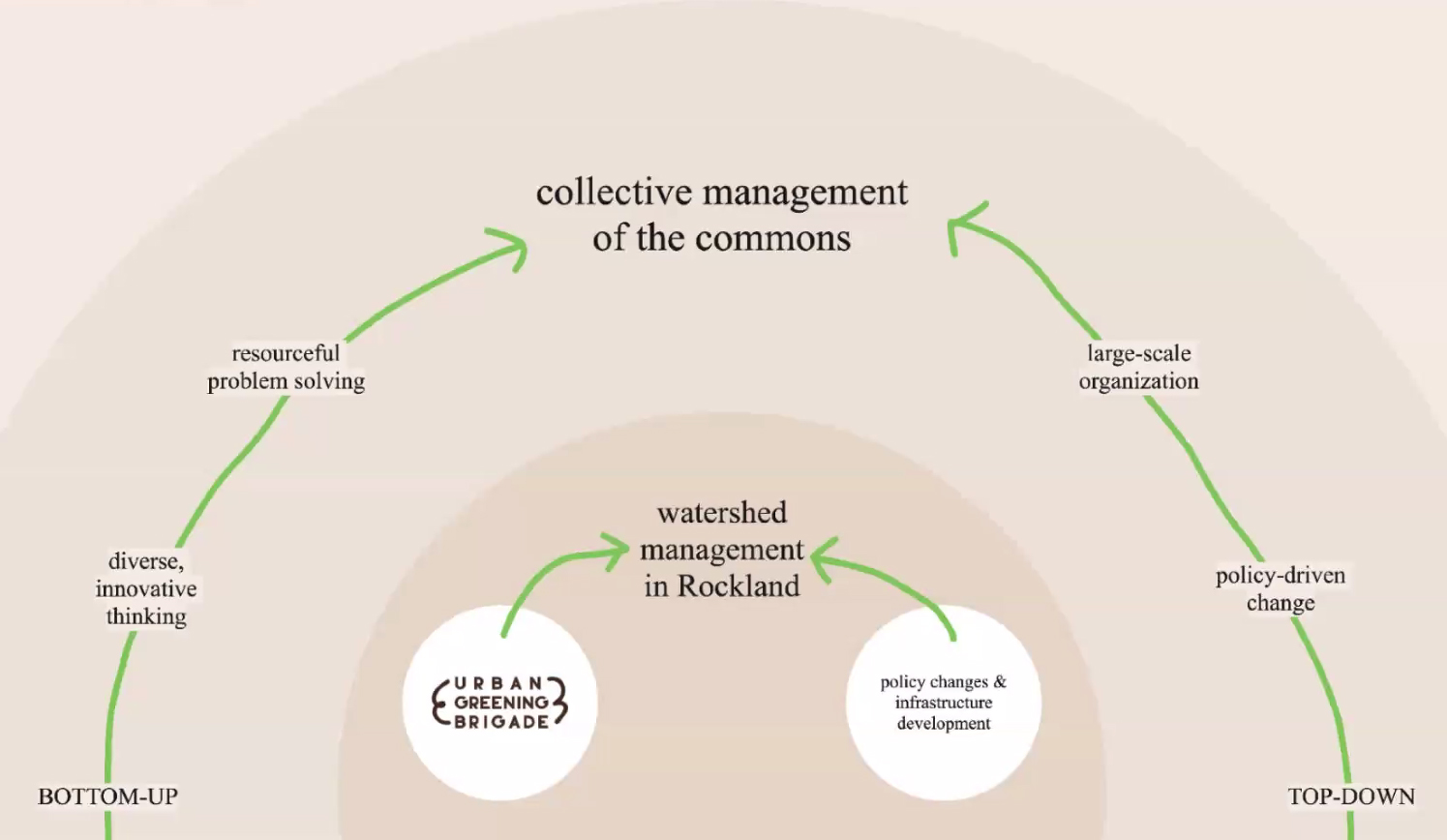
Senior Seva Simone 22 ID proposes an online platform based on physical location and shared interests that would inspire users to “get out there and do good.” The user in his presentation connected with local beekeepers after discovering that his apple trees were dying due to lack of pollination, getting the impetus he needed to make a meaningful impact in the community.
Cannon sees the project as a strong one and beautifully sums up the role of the designer in multidisciplinary collaborations. “Designers have particular skills and ways of synthesizing ideas that are different from the skills of scientists and others trained in analytic thinking,” he explains. “They’re almost always trying to focus in, while we’re trying to widen that aperture of possible futures as much as possible and facilitate discussion before moving ahead.”
—Simone Solondz
December 20, 2021
